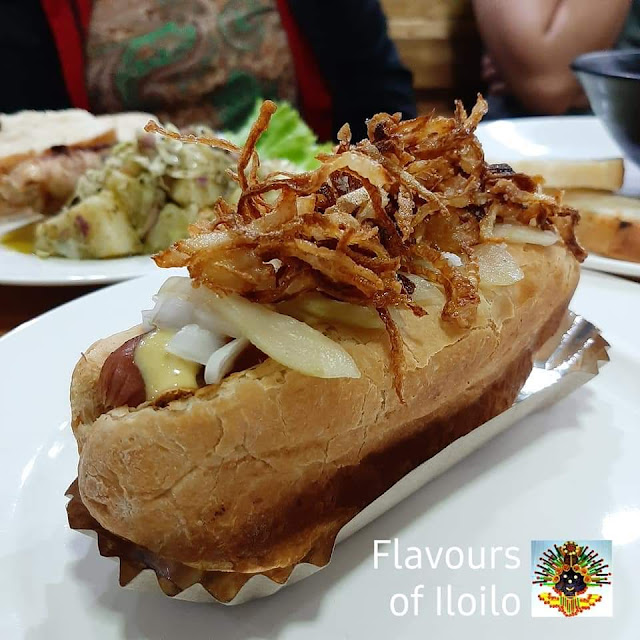This is Chicken Bacon with Potato Salad Pesto. It is among the many Danish specialties served at Munks Coffeeshop and Resto in Sta. Barbara, Iloilo.
Located inside Liz Complex in Bangga Dama, the cafe is partly hidden by a bank (PNB) from the highway but it's just a minute walk from the road.
There, you'll find the husband and wife tandem of Peter Munk Andersen and Lynette Gorriceta Andersen.
Peter is from Denmark but has worked in the Danish Embassies in Poland and Japan together with his wife who hails from Bacolod.
In 2016, they both decided to retire and put up Munks Cafe in the heritage town of Sta. Barbara, Iloilo.
The resto has a homey feel once you enter and feels different from the outside surroundings.
And just like the mom and pop restos (family managed) across Europe, both of them prepare the orders - from the actual cooking to the plating until it is served. You could even ask them about your order or have a crash course on Danish cuisine.
Now going back to the Chicken Bacon, where Peter personally prepares, it's seasones chicken wrapped in bacon then fried.
It comes a Pesto Potato Salad that gives a rich taste of the herbed vegetable side dish.
You'll definitely love the home-made Foccacia bread as each slice and bite comes with a definite handmade texture and flavor coming from its natural ingredients.
It's perfect for the Indian Curry with Chickpeas in Tomato Coconut Sauce. The rich dish has the delicious taste explosion of flavors - spicy curry, creamy coconut and tangy tomato.
Then there's the Vegetable Pasta - a mix of 3 different kinds of pasta (squash, spinach and wheat ) pluw mushroom and chicken in pesto sauce served with home-made bread.
My favorite is the Danish Hotdog with its meaty goodness toppedcwith ketchup, mustard, pickled cucumber and crispy onions - all embraced in a toasted bun that rivals the foccacia.
We finished our Danish specialties encounter on a rather a sweet and tangy note as we enjoyed the lemon cake made with a densed chiffon topped with lemon cream fondant and served with a sprinkle of dried fruits.
It was a delicious and curioisity-satisfying meal with an internationa flair. Be it something familiar with a different take or somethong that was fully in the unfamiliar category - but were all good.
And that reminds me to make another schedule at Munks Cafe for there are still many dishes that caught my attention, and deserve another gastronomic visit.
Photo credits to
Munks Coffee and Resto Facebook Page












